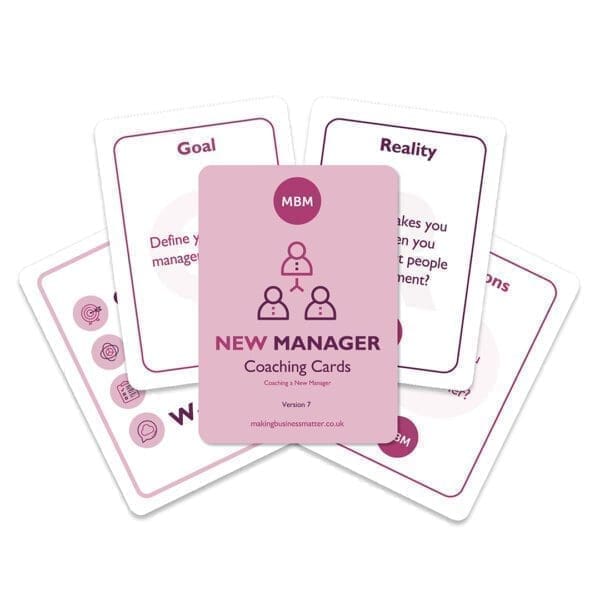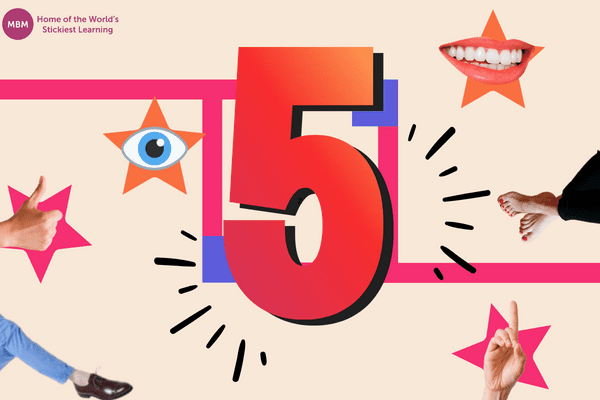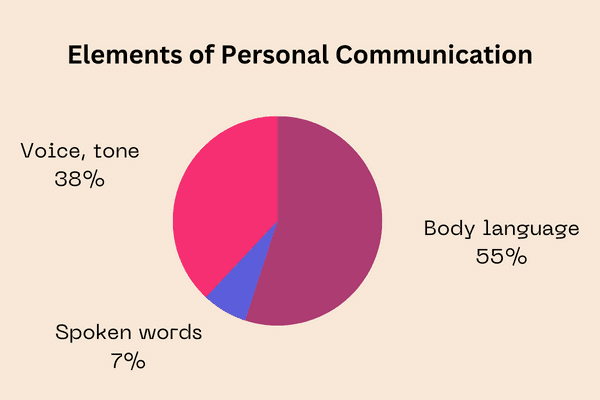Nonverbal Communication Speaks the Real Deal!
Having great communication in the workplace environment will ensure managers have all the information they need and want, including unspoken issues, hidden feelings, or expression signals. All these nonverbal communications are body language examples that surprisingly are an exciting topic to learn.
Communication takes an important part in business relationships as well as managing relationships. As a manager, it is a crucial point to master this skill. And body language is one of the elements of communication that you need to learn. The reason is that it will open the knowledge to the universal silence of language. Interesting right? You can even read or distribute information through your body and it’s effective as what words can do. There are many body language examples that will help you deliver and receive almost all the information you want.
With nonverbal communication, you can understand more about what your subordinates want to tell you. And you also can highlight the information that you want to distribute to them. Both ways are beneficial for you, and both ways are body language examples. By mastering this nonverbal communication, you can secure the effectiveness of management communication, either between you and your subordinates, you and the management leaders’ team, or even you and the clients of your company.

>> New Manager Coaching Cards <<
Why is Body Language Important?
Body language is a key to success in both personal and professional relationships. Understanding the types of body language will help you to navigate communication effectively. The way you present yourself in front of others is extremely important and should have a special meaning. The way you behave and act are body language examples that will distribute some information even if you don’t say a word.
There’s an interesting and strong statement by Peter F. Drucker a social scientist and famous author on management-related literature about nonverbal language. One of his famous quotes is:
The most important thing in communication is to hear what isn’t being said.”
It’s a general fact that many people don’t realise how important nonverbal language is in communication. The study said if it is distributed well, nonverbal or body language can serve as a powerful form of communication. It distributes more information than words can. Appearance, gestures, facial expressions, demeanours, postures, and movements are several famous body language examples. These are famous examples that a manager can use to highlight their information.
What Are the 5 Types of Body Language?

There are five famous body language types. We can learn and use them for general company purposes. From this skill, it will be easy for you as a manager to identify the information behind nonverbal language, either from your subordinates, colleagues, or clients. Sometimes you can get clear clues and indications of the thoughts, feelings, and emotions of the person even if they don’t speak a word to you. Those kinds of language are body language examples that could be a vital part to learn for your professional life purpose.
1 – Body Language Examples: Facial Expressions
Nonverbal communication is an important element to share information. One of the famous ways is through facial expressions. Facial expressions are universal and generally can be identified or distributed in the same manner that is easy to recognise even across various cultures. Let’s say this nonverbal language includes happiness, confusion, sadness, anger, surprise, desire, fear, disgust and excitement.
Based on research by Paul Ekman, an American psychologist and professor emeritus at the University of California, San Francisco who is a pioneer in the study of emotions and their relation to facial expressions, about “Nonverbal Communication” in 1956, there are techniques for measuring nonverbal communication. And these techniques can be learned in order to get a better understanding of how people share information through facial expressions.
Let’s take a moment to think about how much a person’s facial expression affects your communication process. You probably will be aware that it gives so much portion of how much information you can get through it. And one interesting fact, facial expressions may reveal the true feelings that are probably hiding inside the person about a specific situation or information that they shared with you.
Sticky Learning ® is 7 times more effective than 1-day training courses. Plus, you will get a Chain of Evidence proving your Return on Investment. Discover soft skills training that changes behaviours long term.

2 – Body Language Examples: Body Movement
As a manager, it is important for you to be aware of the power of body language. The smallest expression that you do with your face, the movement of your hands, and the way you sit or stand are strong body language examples that will distribute specific information to people around you at that time.
The next nonverbal cue from body language examples that we will describe here is body movement. Managers in the workplace can convey a great deal of specific information without even speaking a word. This is how much power you can get once you master this body language skill. There are many possible signs that can be communicated through body movement.
What kind of body movement are we talking about here? It’s related to all gestures or movements your body does in a specific situation when you do the communication process. Head, hands, arms, and legs can be used to represent the right information that you want to deliver. Let’s say a waving hand to people generally means welcome, a simple nod of your head generally means agreement or a cross sign of your hand generally means decline. All of them are body language examples from this category.
3 – Body Language Examples: Eye Contact
There is a universal statement that said eyes are a window to the soul. Believe it or not, it is quite right. Eyes can speak, you just need to learn how to read the information. It is so because most of us have a visual sense so eye contact becomes so important in the communication process. You can see and read if the person or people you are talking with are excited, shied, or feel bored at the moment. These are the situations of body language examples from this category that you can learn.
There are several important pieces of knowledge about eye contact that can help you get more information or maintain the communication process. The first is pupils. For the most part, pupils are not very easy to recognise, but you can just get the sense of feeling while you look at someone’s eyes and the pupils getting bigger. There’s a big possibility they are interested in the communication or information that you share at the moment.
The next one is the direction of their eyes. In some training or presentation phases, you will find some members or participants looking in another direction that is not at you or the material on the board. It is one of the indicators that they are not interested in whatever information you are sharing at that time. Another one is their blink rate. Try to watch how many blinks they do in one minute. If it is more than 10 times, that possibly means they are interested in the information you share with them.
4 – Body Language Examples: Posture
Have you ever observed the difference in the posture of your manager, the highest general manager in your company, the regular customer service rep, and the cleaning service person? Can you see the difference in how their posture can represent who they are, or in some cases what their position in the company is?
Posture can tell many things about people. Sometimes it represents who they are or what power status they have in the company. The way they stand and walk, the way they sit, and how they cross their arms are body language examples from this category.
Why is posture so important? Most managers need to analyse their posture. It is very important for managers to develop the right posture that they need to have for the general situation or a specific moment. Keep reading to get a better understanding.
The reason why posture is important in the communication process or important to deliver the right information you want to distribute is that mostly it has a big effect on how other people perceive you. That’s why we need to analyse our own gestures. Is it right already? Does it represent the person that we want to be? Or is it you don’t have any clue about that? Well, it’s better to analyse it fast so you know what people perceive about you.
5 – Body Language Examples: Personal Space
In today’s various cultural environments, it is crucial to consider the importance of nonverbal language that is affected by different ethnicities or groups. Personal space is one of the body languages in this category. For example, have you ever experienced an uncomfortable feeling during a communication process because the other person was standing too near or too far from you?
In certain societies, the distances will be defined based on the relationship level between the people involved. Mostly for general business conversation, we can use a personal distance for two people conversation where the distance enables us to see the other person’s expressions, eye movements, and general body language appearance. However, try to avoid having a distance of less than one meter. This is one of the body language examples from this category that is important to notice.
Body Language Examples for Professional Life

People who are excellent at reading body language usually will have great careers and great personal relationships. Here’s a notion based on research by Dr Albert Mehrabian in 1970 about elements of personal communication. There is an interesting result that shows the body language portion gets the highest portion as the element of personal communication.

As a manager, you need to take note, that when you master this skill, it will be easy for you to secretly know what the other person is thinking when they get into a conversation with you. Somehow, it feels like a superpower for a special case. Interesting right?
Let’s take a look at some of the body language examples below that can be used in your professional life.
#1 – Showing Interest:
This is one of the body language examples that you can use in general situations such as in a business meeting or presentation.
Let’s say in a business meeting as a manager when we want to show interest in the presentation material, we can manage persistent eye contact with the presenter or keep our eyes directed to the board where the material is displayed. Also, we can use gestures such as a formal nod once the presenter seems to ask for support for some material and avoid showing a gesture that can represent a bored mood or something similar.
#2 – Showing Confidence:
This is one of the body language examples that you can use on a specific occasion such as a training session.
Training is a company’s important program in order to increase employee work performance. So, it is crucial for the manager who will bring the training material to look smart and confident. This is crucial once you are the manager who needs to hold the training. So here are some tips about how to do it.
Remember that all your body language should represent the right information, which is in this case smart and confident. As a coach, you need to make sure that you hold on to a good posture for the whole training session. An appropriate posture can represent that you know what you are doing, or you are good at this presentation material so no doubt, people or meeting members can fully trust you. You can use good eye contact from one meeting member to another member during the training.
Furthermore, you can also use body movement language, such as hand gestures that are appropriate to the specific moment where the material is given. When it comes ask a simple question to the chosen member, get to be near him but respect the personal space distance and make good eye contact once they explain an answer based on their perception. Make sure to avoid using bad posture because it can distribute a wrong message to the members. This is an important part of the body language examples for a manager’s live performance.
#3 – Showing You Are the Right Man or Woman:
This is one of the body language examples that you can use all the time when you are in the workplace environment.
There are interesting facts about shoulders that almost all of us don’t realise. The shoulders are the most mobile joint part of our body. We can move them up and down to show some body language signals. We even can rotate them to the right or left to support eye directions.
Nowadays, it is easy for us to see or recognise people with bad posture. And for sure, as a manager, you don’t want to be categorised as one of them. A simple good posture can change everything, especially people’s opinions about you. So make sure you hold on to the right posture when you stand, walk, or sit.
Shoulders back and head straight. Do this kind of position to show a positive gesture. You will realise how important this posture is even for your own self. People will have a good opinion about you, no matter what position you get in the company. And once again, in fact, almost all famous people in the general company in the world have this kind of posture and it represents power and knowledge. This is a great posture as one of the body language examples that should be used by a manager.
Unveiling Hidden Messages With Famous Body Language Examples

Reading body language or nonverbal language is a good skill to have in a workplace environment. This skill can help you to know what information is hidden behind people’s specific body language. And you can use it for your own purpose. Understanding body language information will lead you to have a better connection with the people you want. Remember this body language will provide you with good information about how people may be feeling in a given situation. Below there are several common body language examples and what is the secret hidden behind each of them. Let’s take a look.
1. Eyebrow Flash
When someone does this eyebrow flash, you can conclude it as a great sign of interest, approval, agreeing signal, thanking someone, or seeking more information. This is one of the body language examples from a positive gesture category that is important to notice.
2. Handshake
When someone is willing to do a handshake with you, you can conclude it as a welcome gesture or mutual respect.
3. Authentic Mirroring
When someone does mirror your body language, even if not one hundred per cent of them, but you can see some of them clearly, it means support.
4. Mutual Eye Contact
It is very easy to read. If someone does this to you, clearly it means interest, or in other cases, it could be a curiosity. This is one of the body language examples from a positive gesture category that is important to notice.
5. Pure Smile
No doubt, when someone smiles at you, then you can feel the honesty. Then it means happy to see you.
6. Head Tilt
When someone looks at you with the head tilted to one side, exposing the neck, it shows they are comfortable with you and feel welcome.
7. Shared Laughter
This is when both of you respond with a laugh to a specific funny situation or condition. This is another way that the person wants to give you a good signal to get connect with you.
8. Open Palms
This is a good gesture that shows honesty and sincerity. Furthermore, this is one of the body language examples from a positive gesture category that is important to notice.
9. Crossed Ankles
This position can be done whether the person is standing or sitting. If you find a person with this body language, it means they feel uncomfortable. Also, this could be a sign of being bored and not interested.
10. Hand Clasping
Sometimes we do this in a public area, a new environment, or a formal meeting, and there’s nothing wrong with it. This kind of gesture usually means confidence. It represents the knowledge and observation phase.
11. Thumbs Hidden
As a manager, you will occasionally find your subordinate hiding their thumb fingers in their pocket. Mostly, this gesture will represent lower self-confidence, insecurity, or at a high level, a feeling of threat. This is one of the body language examples from a negative gesture category that is important to notice.
12. Neck Rubbing
When facing difficult situations, people usually do neck rubbing, or when they use a tie, they will loosen it a bit. It’s a sign of stress or insecurity.
13. Crossed Arms
This is a body language that usually will represent anger, anxiety, or stress. Most people use this gesture in a public area, or in a specific situation such as a difficult situation to handle, and use it to project fear or decline.
14. Hunched Shoulders
This is a general gesture that usually showed by kids when they do something wrong. But it also can be seen through adult people when they do something wrong or they are in a defensive position. So, you need to take note, not everyone has made mistakes when they do this position. It has the possibility that they are just in a vulnerable or lower power position.
15. Rubbing Eyes
People do this gesture when they are tired, or in an angry position but they try to hold it. This is one of the body language examples from a negative gesture category that is important to notice.
16. Fidgeting With Objects
Have you ever watched people play with objects they have once they are in direct discussion or in a forum discussion? It could be their watch, a pen, a ring, or other small objects that are easy to carry with one hand only. It means boredom. They are not in an active mood, and they are not interested in the discussion they are attending at the moment. At a high level, it could represent disappointment.
17. Touching Ears
A repetition of this gesture could mean anxiety. People do this mostly because they feel stressed at that moment. This is one of the body language examples from a negative gesture category that is important to notice.
General Body Language Tips for Managers

Body language is very important because it can help us to not only understand others but also ourselves. It can represent what information we want to deliver to others without saying a word. And, it also can give us real information about what people feel in a special situation when they have a direct discussion with us.
There are general body language examples that are very easy to recognise from managers when they are in their work area. People will know this person is a manager, even when they don’t know them personally. Below we share some general guidance for managers to have good body language especially when they are in the workplace area.
1- A Straight Posture
Stand, walk, and sit straight. Keep this position all the time. Also, this is good for health and can bring a good image. This is the first of the body language examples that you need to have as a manager.
2 – Raise Your Head
Raise your head and don’t lower your head direction. Unless you need to see something, then after that go back to the straight head position.
3 – Make Eye Contact
It’s important to make eye contact with people around you while you do observation, or get into direct discussion with them. It can build a good connection.
4 – Facial Expression
Keep it as a normal action mode as you can. Of course, you need to adjust it based on the situation. But basically make sure your expression shows power, knowledge, and full emotional control even in a difficult situation.
5 – Nod
This gesture can be used once you are in a direct discussion to show that you are listening to them or some kind of support.
6 – Special Gesture
Use an appropriate gesture when you are talking. It is to highlight the information that you want to share.
7 – Shake Hands
You don’t need to use this all the time, just in a special situation where you think you need to do this because of the person’s background, or you want to show some support to them in public.
8 – Space
Always respect someone else’s personal space, and don’t be too near or too far from them when you do the conversation.
9 – Crossed Arms
Show this when you want to share a signal of observation position. People will know you are in a serious and full-power position at the moment. This is the last but not the least of the body language examples that you need to have as a manager.
Final Words
With large responsibilities and busy schedules, sometimes managers don’t pay attention to their body language. In this case, their body language will automatically send the true feeling they have at the moment. It is not wrong of course, but in not-too-good situations such as when you feel tired, powerless, anxious, angry, or disappointed, then it will create inappropriate information that probably you don’t want to share. So, understanding and knowing how to use the right body language for a general or specific situation will be just like a treasured skill for all managers.
Check out other merch on Amazon.




